Making your own sauerkraut is as simple as slicing a cabbage and adding salt! Then we add some steps to get the fermentation process underway. I recently purchased a Kilner Fermentation Set from my local organics store, as I want to make lots of different fermented foods and in larger quantities. But you don’t need to do this – a simple jar will work well too. Here is the process…
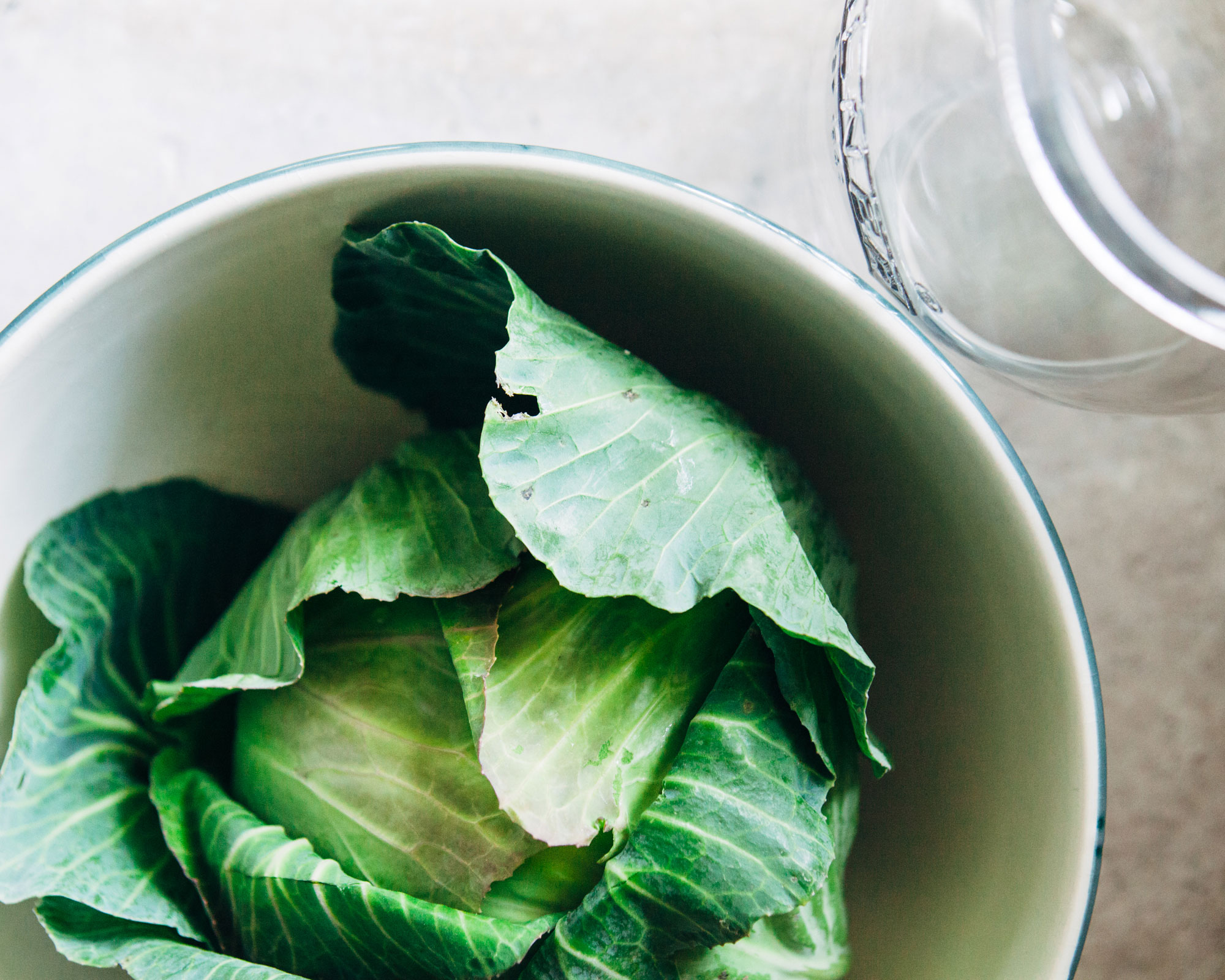
Purchase a medium sized organic cabbage, remove the outer leaves and core and slice. I like my sauerkraut a little chunky so, as you can see, I haven’t sliced it finely.
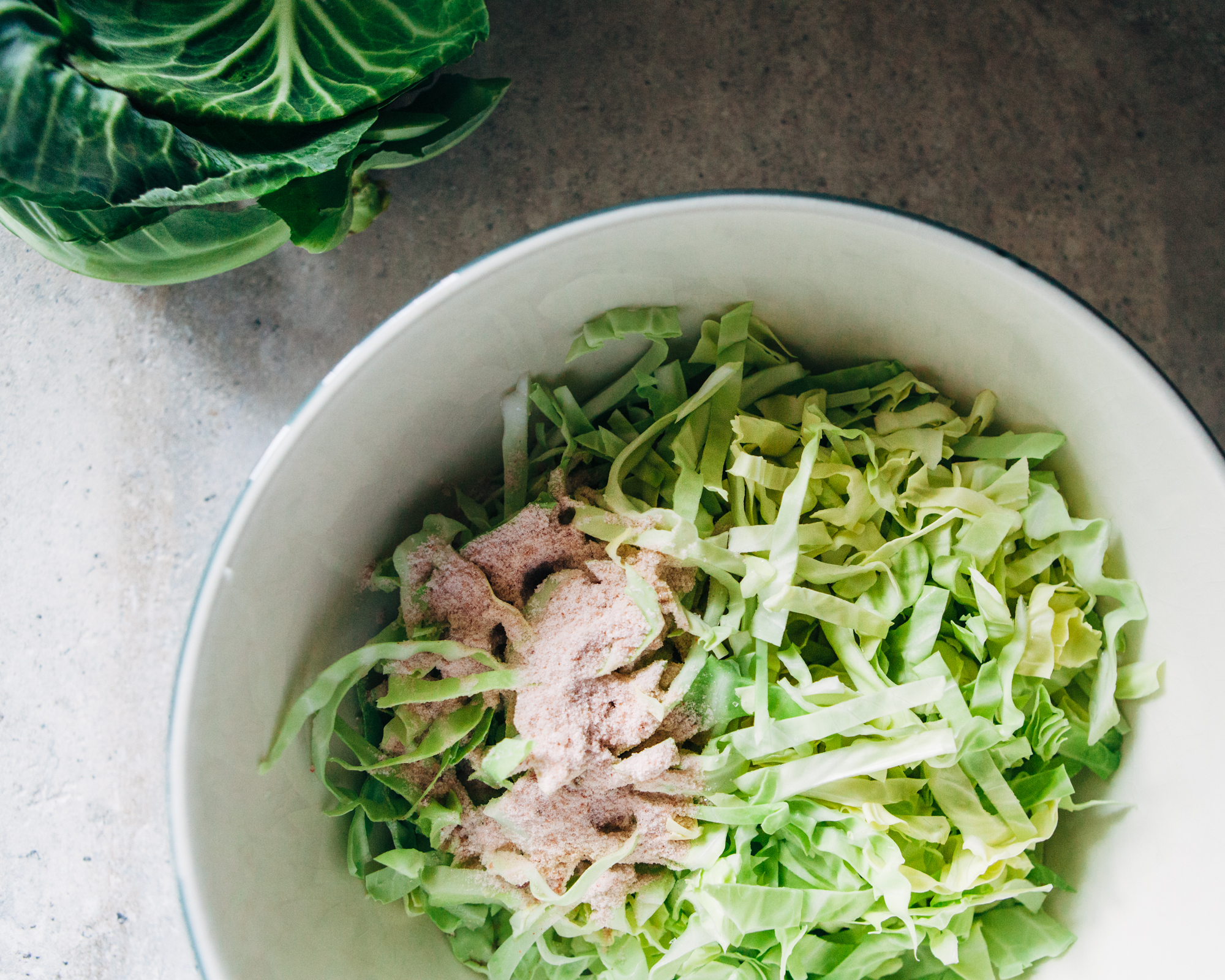
Add one tablespoon of sea salt or Himalayan salt. I’ve used Himalayan salt, which is pink, and you will see further down that the juice has a pretty pink tinge to it! Rule of thumb for salt to cabbage ratio is 1 tablespoon per 800 grams of sliced cabbage.
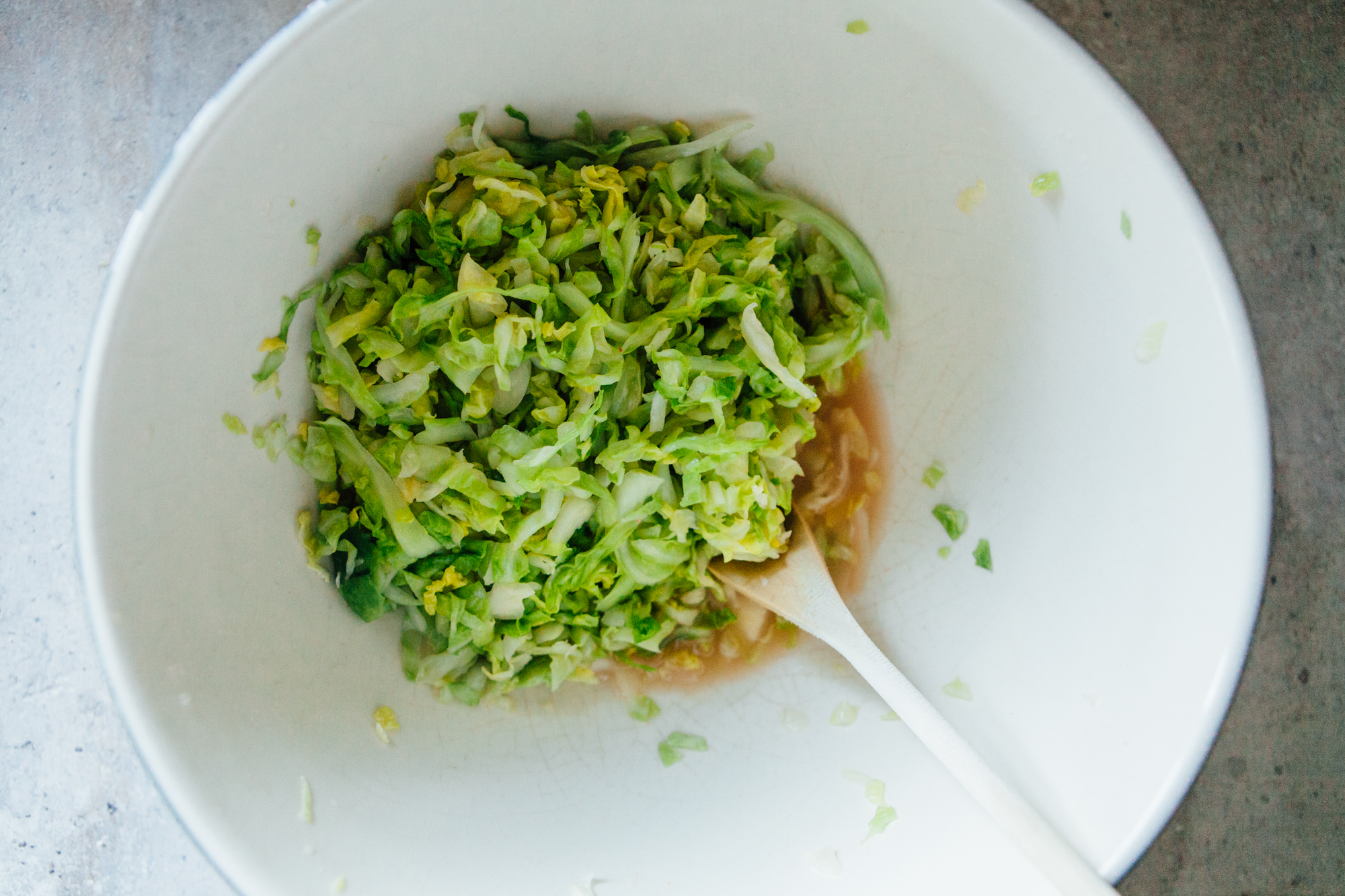
Muddle the cabbage and salt with a wooden spoon for about ten minutes. This means to kind of smash it repeatedly, but not in a violent way. You will see the cabbage juice start to release. After ten minutes I like to get my hands into the mix (clean hands of course) and just grab handfuls and squeeze. Do this for a few more minutes.
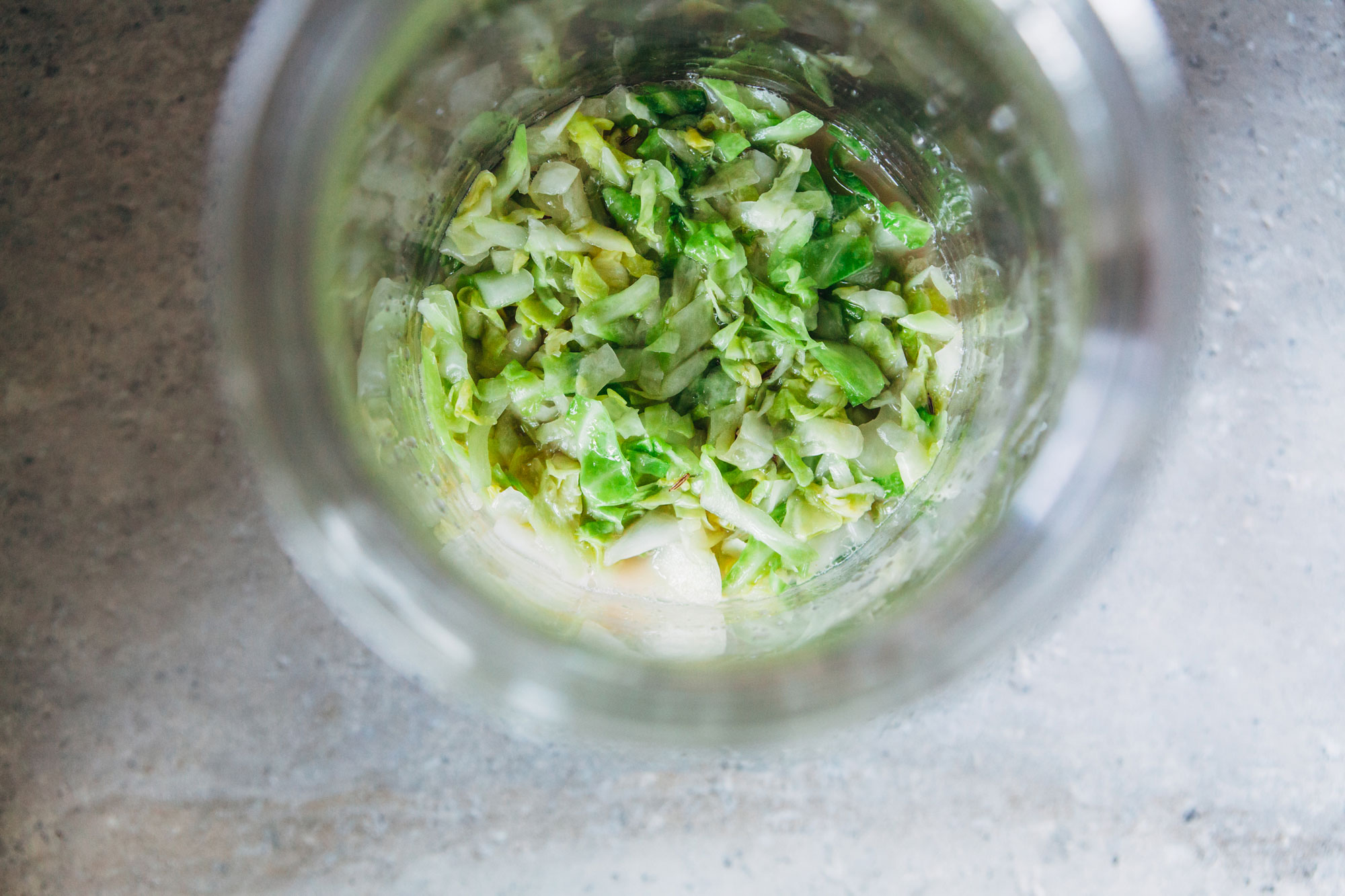
Add the cabbage mix to a nice clean jar and press down with the wooden spoon. You should have enough liquid to cover the cabbage – this is the important part as we don’t want any escapee cabbage that could become mouldy and gross. Add some sort of weight to keep the cabbage below the brine. This ensures that we have an anaerobic (without air) fermentation process and it also prevents the cabbage mixture pushing itself above the brine, which can sometimes happen once air bubbles form.
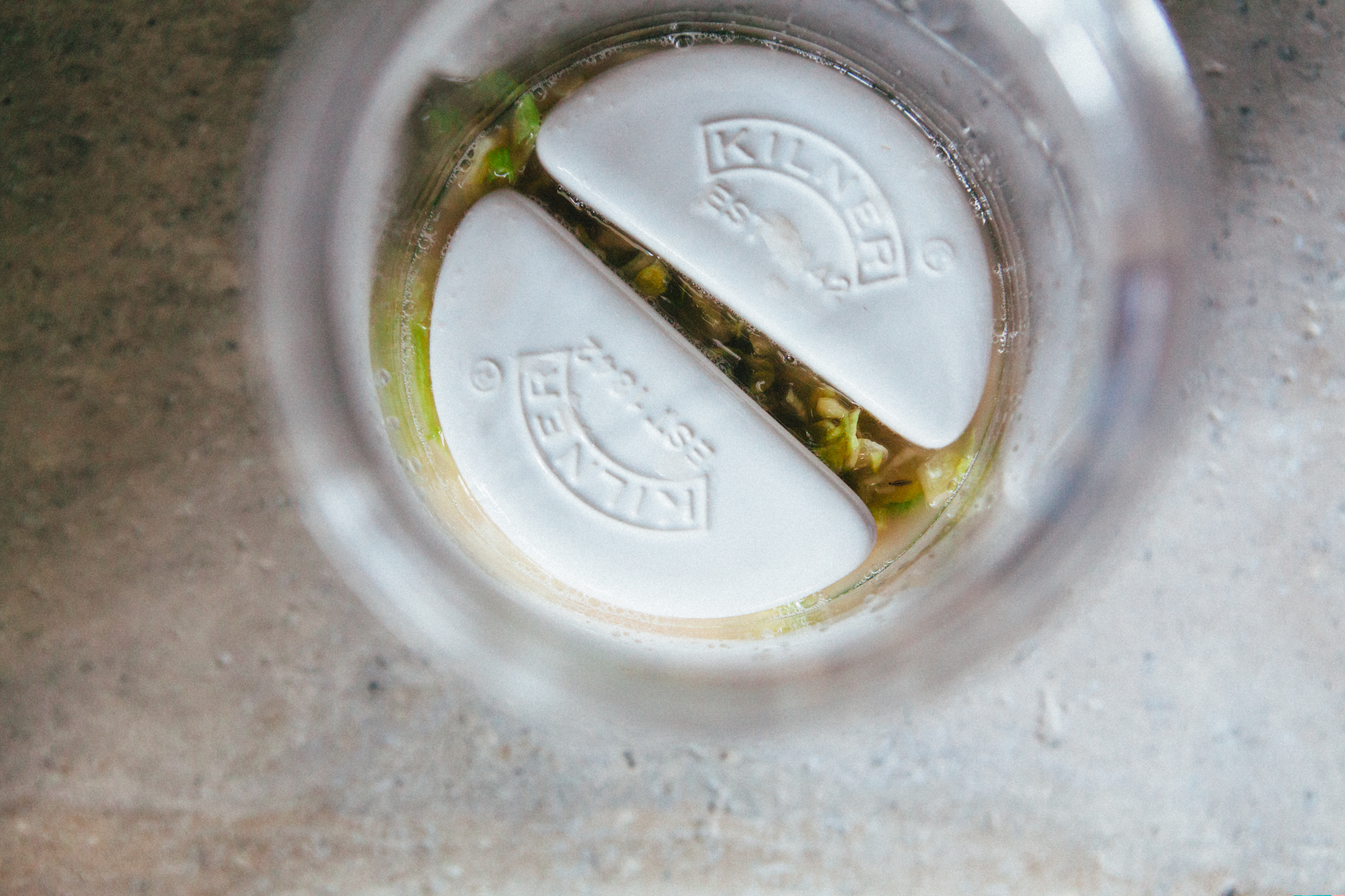
The Kilner set comes with ceramic weights but, previously I have used the cabbage core cut to fit snugly inside the jar and rested a smaller jar atop the larger jar. Once the weights are in place, you seal the jar loosely with a lid. The Kilner set has an airlock which allows oxygen and carbon-dioxide to escape, thus ensuring an anaerobic environment for the growth of our mighty microbes. However, the airlock is not essential by any means. In fact, if you just starting out with making your own sauerkraut, I would recommend just using a simple lidded jar before investing further.
Then, simply set the sauerkraut jar on your bench top for 5-7 days in a cool place to ferment. Then refrigerate and enjoy!
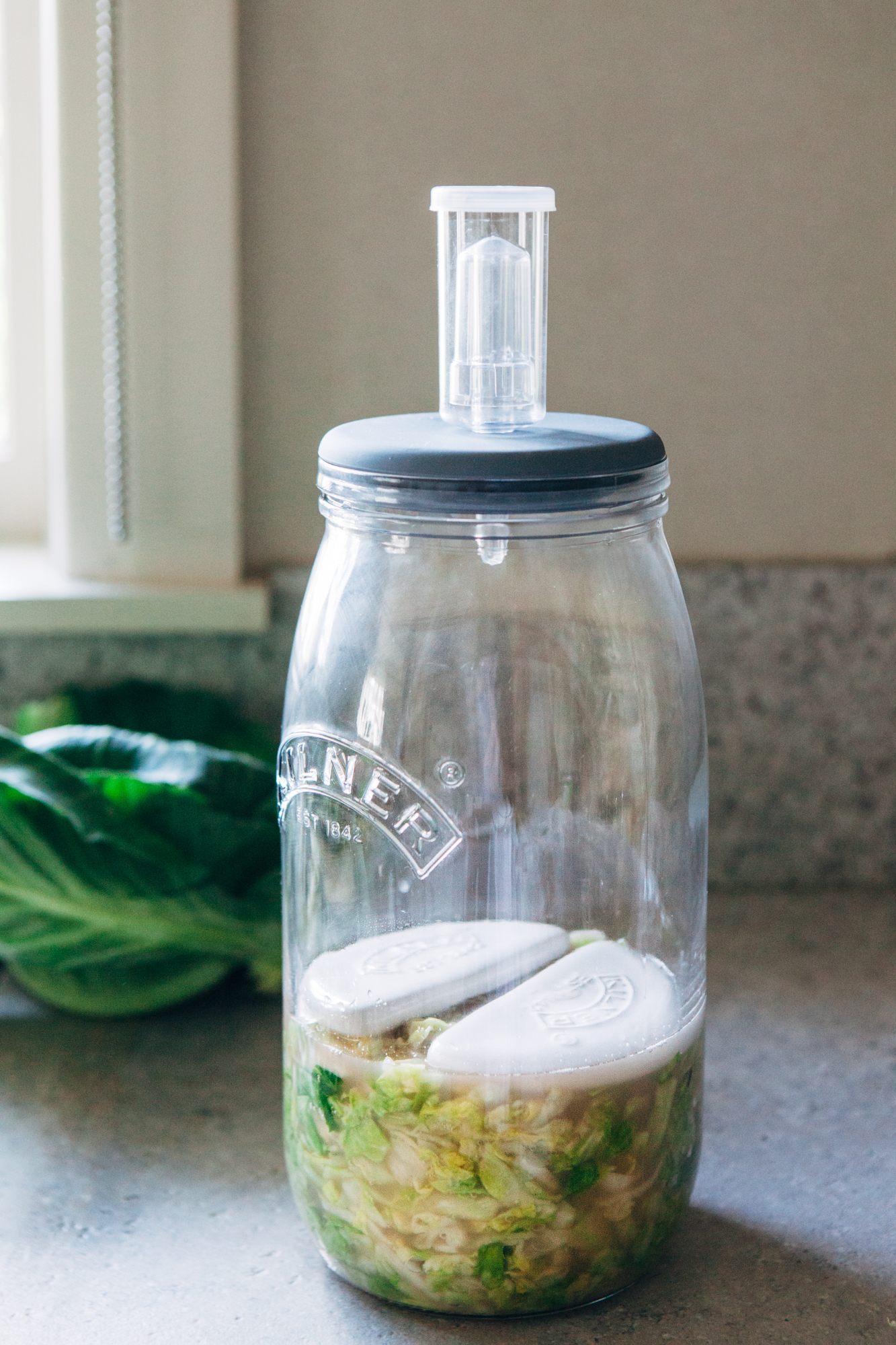
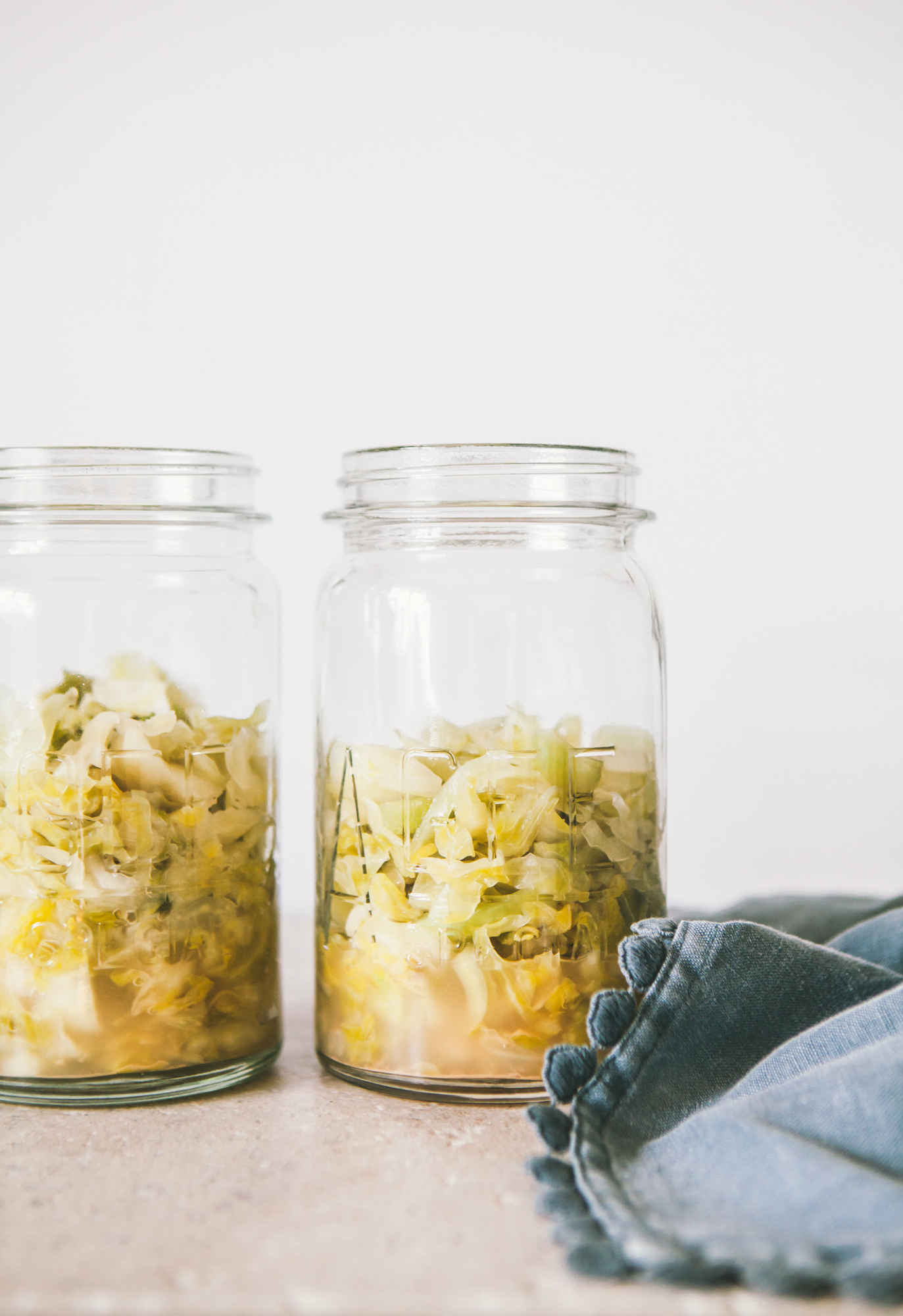

Want access to more gut-healing recipes?
The Bestow Love Your Gut Programme combines decades of holistic skincare wisdom with new advances in gut science to create a gut-healing programme that addresses the root cause of many skin challenges.
The online programme includes 7-day meal planner, shopping guides, daily nurturing rituals, gut-health education and wellness wisdom.